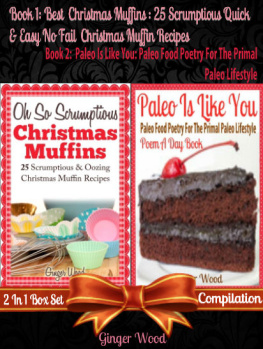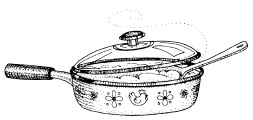Paul Andrews - 50 Quick Christmas Facts
Here you can read online Paul Andrews - 50 Quick Christmas Facts full text of the book (entire story) in english for free. Download pdf and epub, get meaning, cover and reviews about this ebook. year: 2012, publisher: Andrews UK Limited;Andrews UK;AUK Authors, genre: Detective and thriller. Description of the work, (preface) as well as reviews are available. Best literature library LitArk.com created for fans of good reading and offers a wide selection of genres:
Romance novel
Science fiction
Adventure
Detective
Science
History
Home and family
Prose
Art
Politics
Computer
Non-fiction
Religion
Business
Children
Humor
Choose a favorite category and find really read worthwhile books. Enjoy immersion in the world of imagination, feel the emotions of the characters or learn something new for yourself, make an fascinating discovery.

- Book:50 Quick Christmas Facts
- Author:
- Publisher:Andrews UK Limited;Andrews UK;AUK Authors
- Genre:
- Year:2012
- Rating:4 / 5
- Favourites:Add to favourites
- Your mark:
- 80
- 1
- 2
- 3
- 4
- 5
50 Quick Christmas Facts: summary, description and annotation
We offer to read an annotation, description, summary or preface (depends on what the author of the book "50 Quick Christmas Facts" wrote himself). If you haven't found the necessary information about the book — write in the comments, we will try to find it.
This book is a quick read on Christmas facts you probably did not know! What are the names of Santas Reindeers? Do you know who made the first Christmas Cards? Find out these facts and more in this quick read fact book!
50 Quick Christmas Facts — read online for free the complete book (whole text) full work
Below is the text of the book, divided by pages. System saving the place of the last page read, allows you to conveniently read the book "50 Quick Christmas Facts" online for free, without having to search again every time where you left off. Put a bookmark, and you can go to the page where you finished reading at any time.
Font size:
Interval:
Bookmark:
Title Page
50 QUICK CHRISTMAS FACTS
By
Paul Andrews
Publisher Information
50 Quick Christmas Facts
published in 2012 by Andrews UK Limited
www.andrewsuk.com
This book is sold subject to the condition that it shall not, by way of trade or otherwise, be lent, resold, hired out or otherwise circulated without the publishers prior written consent in any form of binding or cover other than that in which it is published, and without a similar condition being imposed on the subsequent purchaser.
Copyright Paul Andrews 2012
The right of Paul Andrews to be identified as author of this book has been asserted in accordance with section 77 and 78 of the Copyrights Designs and Patents Act 1988.
50 Quick Christmas Facts
- The first reference to Christmas trees appeared in print in Germany in the year 1531
- The 26th of December was traditionally known as St Stephens Day, but is more commonly known now as Boxing Day
- St Francis of Assisi is created as having introduced Christmas Carols to formal church services
- The carol Silent Night was written in 1818, by an Austrian priest Joseph Mohr. It is said he wrote because the organ was broken and he wanted a carol which could be sung to guitar.
- It is said that the Puritans in America tried to make Thanksgiving Day the most important annual festival instead of Christmas. They did not succeed of course.
- Oliver Cromwell, in England banned Christmas Carols from being sung between 1649 and 1660. Fortunately this is not the case now.
- The commonly used abbreviation for Christmas, to Xmas, is derived from the Greek alphabet. X is the letter Chi, which of course is the first letter of Christs name in the Greek alphabet.
- In the year 1856, United States President Franklin Pierce, decorates the first White House Christmas tree.
- In the year 1836, Alabama was the first state in the USA to declare Christmas a legal holiday.
- In the year 1843, the first known Christmas card was printed in England for Sir Henry Cole. He did it to save time when sending out his Christmas letters.
- In the year 1907, Oklahoma became the last USA state to declare Christmas a legal holiday.
- In the year 1937, the first postage stamp to commemorate Christmas was issued in Austria it is believed.
- Since medieval times, church bells have been rung to announce to the world the coming of the saviour on Christmas morning.
- It is believed that the Christmas tree was first decorated with lights in the 16th century. It is said that Martin Luther, the Protestant reformer, was the first to add lighted candles to the tree.
- The tradition of the wreath begun in the 17th century. The Holly, with its sharp pointed leaves, symbolises the thorns in Christs crown-of-thorns. The Red berries symbolises the drops of Christs blood. A wreath at Christmas signified a home that celebrated the birth of Christ.
- Hanging a stocking on the fireplace started as a tradition around 400 years ago. It derived it is believed from the custom in Holland, of children placing wooden shoes or clogs, next to the fireplace hearth the night before the arrival of St. Nicholas.
- The largest known functional Christmas cracker was 45.72 metres long and 3.04 metres in diameter. It was made by Australian international rugby player Ray Price, in Australia.
- The goose was the customary Christmas fare for a meal, until King Henry VIII took it upon himself to feed upon a turkey.
- It is believed that the first commercial Christmas card, was produced in 1846, it featured a drawing of various family members toasting each other with glasses of wine.
- It is believed that Saint Boniface substituted a fir tree, for the pagan oak in the eighth century as a symbol of faith, and we have been using them ever since.
- Charles Spencer Chaplin, better known as Charlie Chaplin was born on Christmas day in 1889.
- The biggest selling Christmas single record (song) of all time is Bing Crosbys recording of White Christmas.
- The first church building the Dutch built in New York City , in the now USA, was named in St Nicholas honour hence it is called - St Nicholas Church.
- In the year 1834, it is believed that Queen Victorias husband, Prince Albert brought the first Christmas tree to Windsor Castle for the Royal family.
- The Mexican people call the poinsettia flower the Flower of the Holy Night - the Holy Night is the Mexican way of saying Christmas Eve.
- Rudolph the red-nosed reindeer was invented for a US firms Christmas promotion in 1938.
- It is believed that Christmas pudding was originally a soup made with raisins and wine.
- Christmas is an annual celebration of the birth of Jesus Christ, around the world. Christmas is celebrated by both Christians and non-Christians around the world.
- Americans send an estimated 1.5 billion Christmas cards each year in the USA.
- It is thought that the most expensive Christmas tree to date, was decorated in the United Arab Emirates in 2010 at an estimated cost of over $11 million.
- Americans buy 25-30 million real trees, and 8-12 million artificial trees to decorate each year, in the USA.
- The word mistletoe literally translated means Dung Twig.
- The carol Joy to the world is about Jesus return to the earth, not his birth.
- Jingle Bells was the first carol to be sung in space by a human.
- The UK public spends around 20bn on Christmas in general, with about 1.6bn going on food and drink alone.
- Father Christmass reindeer are called Dasher, Dancer, Prancer, Vixen, Comet, Cupid, Donner, Blizten, and Rudolph.
- There have only been seven white (as in it snowed) Christmas days in England.
- The Christmas Turkey as we know it, was imported into France by the Jesuits.
- An old wives tale, which is not true of course, states that bread baked on Christmas eve will never go mouldy!
- The first Christmas speech by the UK Queen was televised in 1957.
- The Christmas cracker as we know it was invented by a man called Thomas Smith. He originally imported small gifts to sell, but until he wrapped them in crackers he did not sell them.
- Ralph Morris invented the Christmas tree string of lights as we know them now back in 1895.
- The song Jingle Bells, was originally called One Horse Open Sleigh and was written by James Pierpont in 1857.
- Mince pies are now mostly vegetarian, but where originally made with beef and spices.
- Carols began as an old English custom called wassailing, which was a way of toasting neighbours to a long life.
- It is believed that the worlds tallest Xmas tree which was 221ft high, was erected in a Washington shopping mall in 1950, in the USA.
- In 1999, people from the state of Maine in the USA, built the worlds biggest ever snowman to date. He stood at 113ft tall.
- Father Christmas, or Santa, is known by different names all around the world - Kriss Kringle in Germany, Le Befana in Italy, Pere Noel in France and Deushka Moroz (Grandfather Frost) in Russia.
- Father Christmas, or Santa Claus as he is known, comes from a Dutch folk tale based on Saint Nicholas, or Sinterklaas, who gave gifts on December 6. This has grown into what we know now as Father Christmas.
- From the song the gifts from the Twelve days of Christmas are A partridge in a pear tree, two turtle doves, three French hens, four calling birds, five gold rings, six geese a laying, seven swans a swimming, eight maids a milking, nine ladies dancing, ten lords a leaping, eleven pipers piping, and twelve drummers drumming. All these gifts add up to 364 gifts, one for every day of the year leading up to Christmas !
Also Available

Font size:
Interval:
Bookmark:
Similar books «50 Quick Christmas Facts»
Look at similar books to 50 Quick Christmas Facts. We have selected literature similar in name and meaning in the hope of providing readers with more options to find new, interesting, not yet read works.
Discussion, reviews of the book 50 Quick Christmas Facts and just readers' own opinions. Leave your comments, write what you think about the work, its meaning or the main characters. Specify what exactly you liked and what you didn't like, and why you think so.


